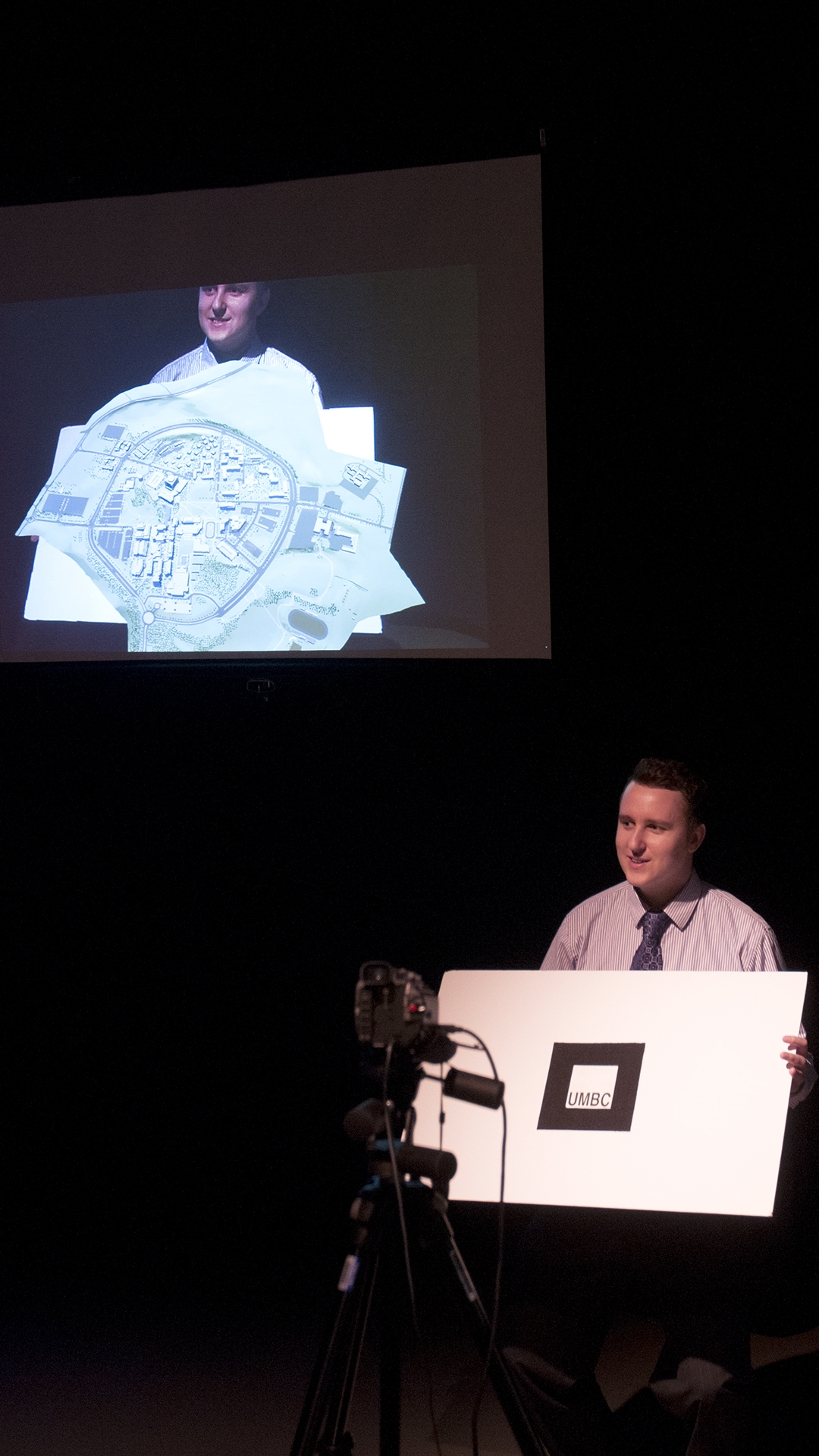
The IRC participated in the visualization of the 2009 UMBC Campus Master Plan Update process and presentation to the Board of Regents. Using an extensive 3D model of the campus, it created three visualizations: a highly rendered animation showing future buildings; video motion tracking showing future buildings in live video settings, and a cutting-edge augmented reality display of the campus to illustrate overarching campus planning themes.
A team of student interns worked to understand and master the process of video motion tracking, which allows one to place imaginary rendered graphics in shots to match perspective, light angle, and texturing. This portion of the presentation was to give viewers a sense of how new buildings would restructure the visual skyline of campus in the context of familiar settings. Four key shots, which included the new Life Sciences, Student Life, Patapsco Dormitory, and Athletics buildings, were selected to highlight future developments. Students acquired all of the source videos themselves and processed the video for motion tracking. These prepared scenes were then handed to another group of interns who performed all of the post-production and rendering processes to skillfully blend the colorful, proposed buildings into the real landscapes.
For the real-time portion of the presentation, the goal was to display data for the master plan in a unique, interesting, and informative way. To do this, a team of student interns created a three-dimensional model of the current UMBC campus and several graphical overlays that could be cycled through during the presentation. Each overlay was designed to give the viewers of the presentation a visual understanding of what locations were being discussed. The software developed for the presentation calculated the position and orientation of a physical UMBC logo captured using live video. Models produced by the student interns could then be moved in a virtual environment to the calculated location and rendered over top of the live video so that it appeared to be in the video itself. This allowed for a presenter to move the UMBC logo on video while appearing to be moving the virtual model itself. The model would then be altered by rendering overlays over top of the campus model dynamically, which would have been impossible to do with a physical model.
Researchers and Creators
Technical Director: Eric Smallwood
Interactive Programmer: Shane Lynch
Students
UMBC Interns: Tyler Chase, Chris Hayes, Rachel Kreutzinger, Jason
Imaging Research Center, UMBC © 2024